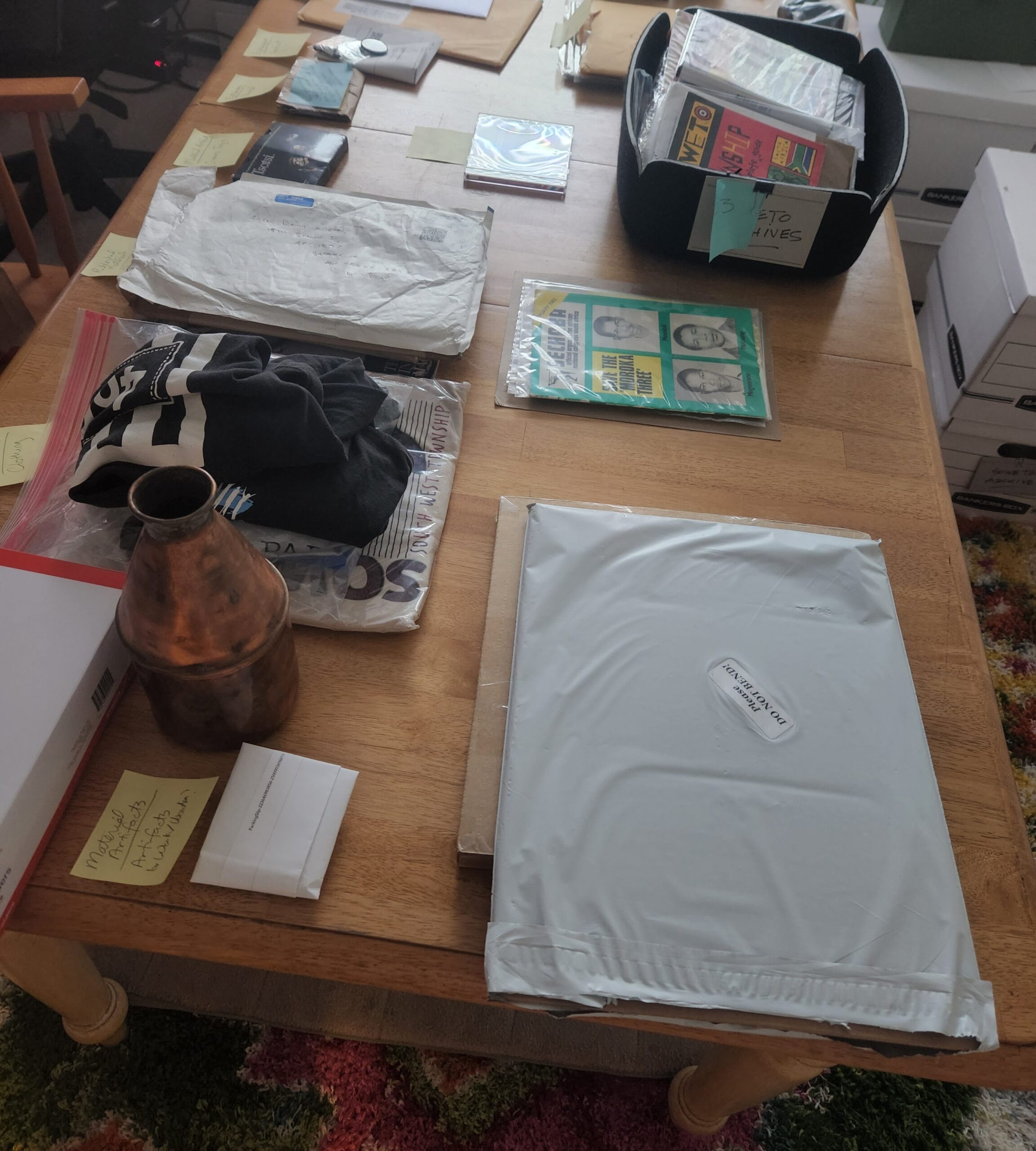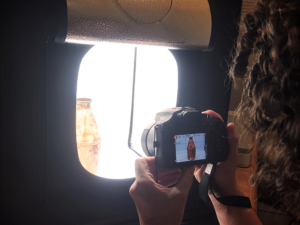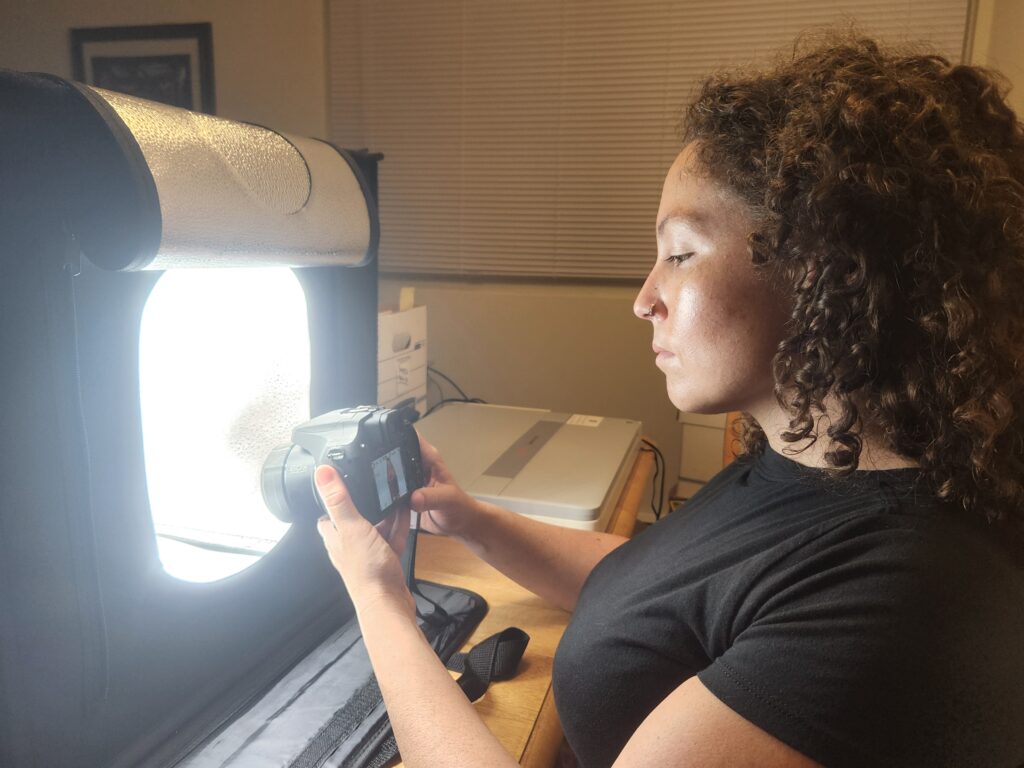Making the Apartheid Heritage(s) Project archive
Archivist, Optimist, Opti-vist
I hesitate to call myself an archivist. When asked for my “professional” opinion about archives or libraries, I gawk. I sputter. I make an awkward deflecting joke. But perhaps I am hesitant to label myself as such and prefer to see myself as a forever student of the art because of my archival training at UNC Chapel Hill. During the course of earning an MSLS, I had the opportunity to work with digital, digitized, and analog collections each of which challenged me to approach them with nuanced methods.
However, one evening I caught myself with Ticonderoga #2s pencils stuck into my hair, lovingly admiring the neat manila folders with identifiers written in tidy pencil lettering. And, even I had to laughingly admit to myself, that I was being awfully archivist-y.
But despite my archivist-y excitement over flatbed scanners, cataloging systems, and spreadsheets of metadata, I still take pause at labeling myself a capital-a “Archivist”.
Instead, I would call myself an optimist.
Why? Because, to lay the foundation of an archival collection – as I have had the great fortune to do for the Apartheid Heriteage(s) Project – requires optimism.
Optimism that the archival bags, folders, and boxes will preserve the items, the slivers of critically important history, for a little longer.
Optimism that the organization and cataloging systems I have concocted will make items not just “findable” but “usable” for researchers within and without academia.
Optimism that the metadata and digitized images of the items will help connect people with the information they seek (and perhaps information they did not even know they were seeking until they found it).
Optimism that maybe, just maybe, the hours of work bent over a table digitizing and organizing these items will help someone out there in this vast world have an amazing “A HA!” moment.
And it is from this very optimism that the choices in processing, cataloging, and digitizing the Apartheid Heritage(s) Project archive are built.
Processing

Every journey has a beginning, and this one began with digging through the Bankers Box treasure troves of Dr. Nieves’ Aparetheid Heritage(s) collection. This collection has been intentionally and critically curated, with each item contributing a critical thread to the spatial-histories of Apartheid Heritage(s). After just one box yielded a vinyl record, military uniforms, press photos, a protest button, and late 19th century lantern slides, it became very clear that I would need to put Jefferson Bailey’s theory into practice and “Disrespect des Fonds” (Bailey 2013). Because this archive would primarily be discovered, engaged with, and analyzed digitally (as well as have item level metadata – more on that in a moment), I made the choice to reorganize the items into groupings that enabled discovery by researchers at all levels.
The initial boxes of items were organized into multiple macro groups which I later used to guide the cataloging process. Some of these groups (or sub-series) are material artifacts (MA), press photos (NP), postcards (PC), and publications-and-pamphlets (PP). After this initial organization, items were removed from mailing envelopes, residual packing tape carefully peeled off, and any errant staples or paperclips disposed of.
Cataloging
Making the decision of creating an identifier schema, assigning identifiers to items, and cataloging the items carefully into folders and boxes nearly stopped me in my tracks. There were too many approaches and considerations. The tyranny of choice struck again! But I returned to the foundation of this entire archival project: optimism that what we were creating now would be meaningful to someone later.
Despite the problematic nickname, I adopted the “Amazon” model of cataloging the items. Essentially, this means that every single item receives a unique identifier and metadata so that no matter what folder or box it may be in or what other items “live” with it in that place, it can be easily found.
For an example, let’s look at the late 19th century copper mine-workers canteen, which I can be seen taking a photo of to the right.

This item is grouped into the “Material Artifact” subseries. As a result of the convention I have gone with in assigning unique identifiers, the canteen cataloged as “MA.001”. The identifier alone indicates what subseries it belongs to, Material Artifact, and what number in that series it was processed, number one.
This canteen will “live” in an archival box with the (wildly racist and sexist) 1960s era “Zulu Lulu” swizzle sticks, a 1965 toy South African Police vehicle reminiscent of a Matchbox Car, and a 1990s era card game where the players roleplay as cops to quash “tsotsis” (a South African slang term for a “criminal” or “hoodlum” from a Black township that carries the pejorative connotations of when white Americans use the word “thug” as a shorthand for how Black boys and men are viewed).
Despite what more traditional archivists may think of the methods I have employed, I am optimistic that this system will enable not only consistent discovery of desired items thanks to the item level cataloging, but also the discovery of curious juxtapositions across like items. How does the 19th century mine workers canteen inform the historic contexts of the “Zulu Lulu” swizzle sticks or the “Tsotsi” card game? I have some thoughts that fall outside the scope of this post (and outside of my small areas of so-called “expertise”), but I am hopeful that future researchers will find similar inspiration in these boxes of items and create meaningful scholarship.
Digitizing
Perhaps equally, if not more important, than the item-level metadata and cataloging system is the digitization of each item in the Apartheid Heritage(s) Project collection. The obvious importance of this is the role these digitized items will have in Apartheid Heritage(s) beyond the project’s digital Omeka S archive exhibit. These items will digitally exist in the interactive 3D recreations of Soweto that are foundational to Dr. Nieves’ incredible spatial-historical scholarship.
Returning to the example of the canteen, the digitized image will be contextualized within a 3D recreation of Soweto that challenges the narratives of Black mineworkers and the “mineral revolution” as well as positions it as a part of a continuum of apartheid that cannot be neatly divided into “pre-apartheid”, “apartheid”, and “post-apartheid” periodizations.
And, again returning to the optimism that is driving this archival work, digitizing each item increases the chances that somebody– a student, a member of the public, a researcher- will engage with these items and have an “AHA!” moment.
The methods I am employing in order to digitize each item for the sake of the project and for the public are challenging me to learn new technologies.

For documents, images, and items that are safe to be scanned, I am using a PlusTek OpticSlim1180 flatbed scanner. This scanner is large enough to accommodate most newspapers, has OCR capabilities, and can scan a high-quality uncompressed tif file that is up to 1200 dpi (dots per inch). Currently tif files at 400 dpi are being retained for in-house use and preservation and the smaller sized, more accessible jpg versions of the images will be used for the actual project and archival exhibit.
For material artifacts and clothing, I am using a Panasonic Lumix FZ80 digital camera to capture a RAW image file that I later use to create both an uncompressed tif file for in-house use and a more accessible jpg version of the photo. For those that have read any of my previous blog posts, you will be unsurprised that I, once again, am a “noob” learning things on the fly. But with the help of a table-top lightbox for smaller items and a standing lightbox for clothing displayed on a mannequin (photos of this delightfully funny but effective setup are incoming) coupled with some research, the process has been successful.
Looking Forward
Although the initial effort to process, catalog, and digitizing the Apartheid Heritage(s) Project archive collection has been modestly successful, much more work remains. I will spend many hours peering into a light box, watching the light of the scanner pass left to right below the lid, and jamming to Lion Babe while I carefully write identifiers in pencil then update the metadata spreadsheet. But I will remain optimistic in the work because although I am “archiving” items of the past, this undertaking is really about the future and creating yet another modest link that connects the two.
You must be logged in to post a comment.